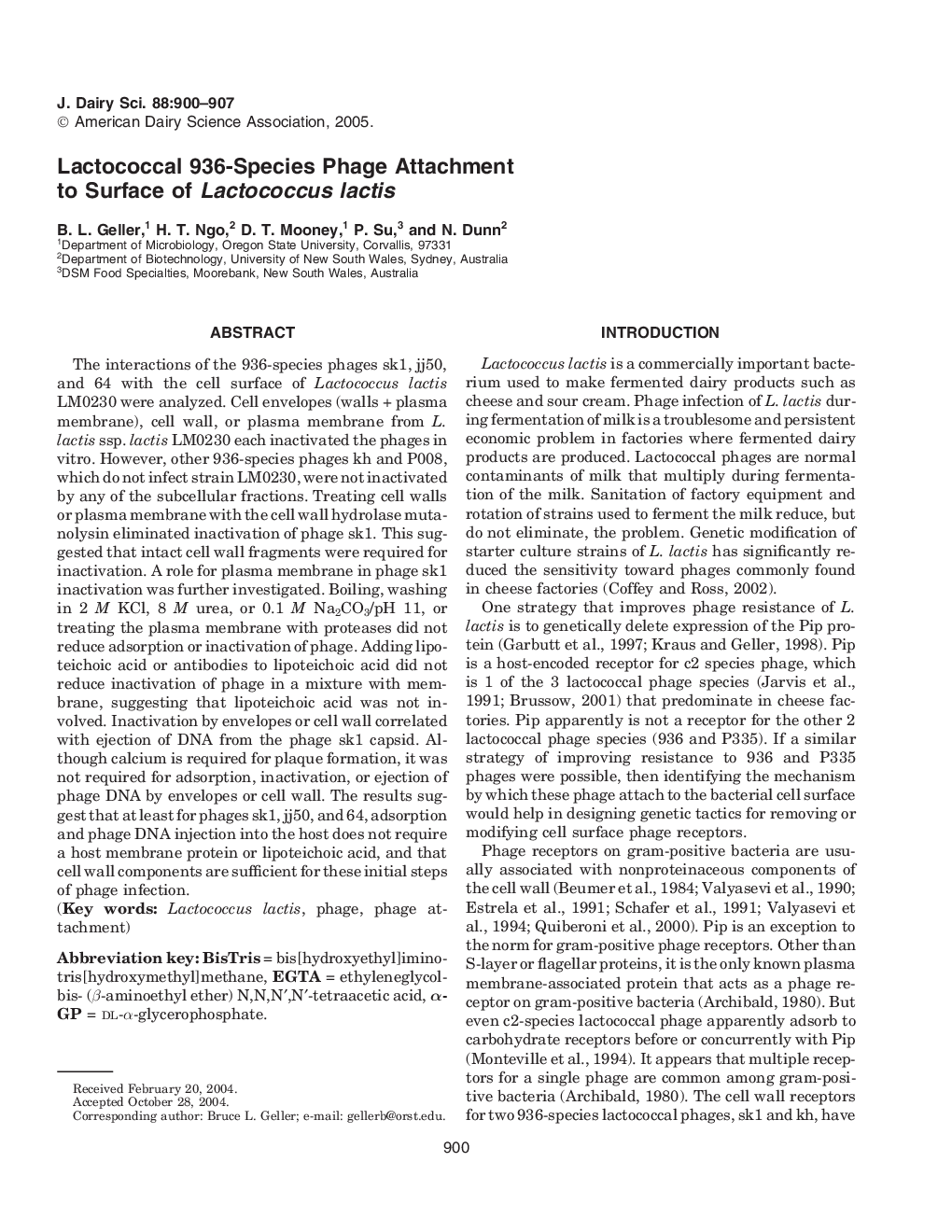| Article ID | Journal | Published Year | Pages | File Type |
|---|---|---|---|---|
| 8981124 | Journal of Dairy Science | 2005 | 8 Pages |
Abstract
The interactions of the 936-species phages sk1, jj50, and 64 with the cell surface of Lactococcus lactis LM0230 were analyzed. Cell envelopes (walls + plasma membrane), cell wall, or plasma membrane from L. lactis ssp. lactis LM0230 each inactivated the phages in vitro. However, other 936-species phages kh and P008, which do not infect strain LM0230, were not inactivated by any of the subcellular fractions. Treating cell walls or plasma membrane with the cell wall hydrolase mutanolysin eliminated inactivation of phage sk1. This suggested that intact cell wall fragments were required for inactivation. A role for plasma membrane in phage sk1 inactivation was further investigated. Boiling, washing in 2 M KCl, 8 M urea, or 0.1 M Na2CO3/pH 11, or treating the plasma membrane with proteases did not reduce adsorption or inactivation of phage. Adding lipoteichoic acid or antibodies to lipoteichoic acid did not reduce inactivation of phage in a mixture with membrane, suggesting that lipoteichoic acid was not involved. Inactivation by envelopes or cell wall correlated with ejection of DNA from the phage sk1 capsid. Although calcium is required for plaque formation, it was not required for adsorption, inactivation, or ejection of phage DNA by envelopes or cell wall. The results suggest that at least for phages sk1, jj50, and 64, adsorption and phage DNA injection into the host does not require a host membrane protein or lipoteichoic acid, and that cell wall components are sufficient for these initial steps of phage infection.
Keywords
Related Topics
Life Sciences
Agricultural and Biological Sciences
Animal Science and Zoology
Authors
B.L. Geller, H.T. Ngo, D.T. Mooney, P. Su, N. Dunn,
